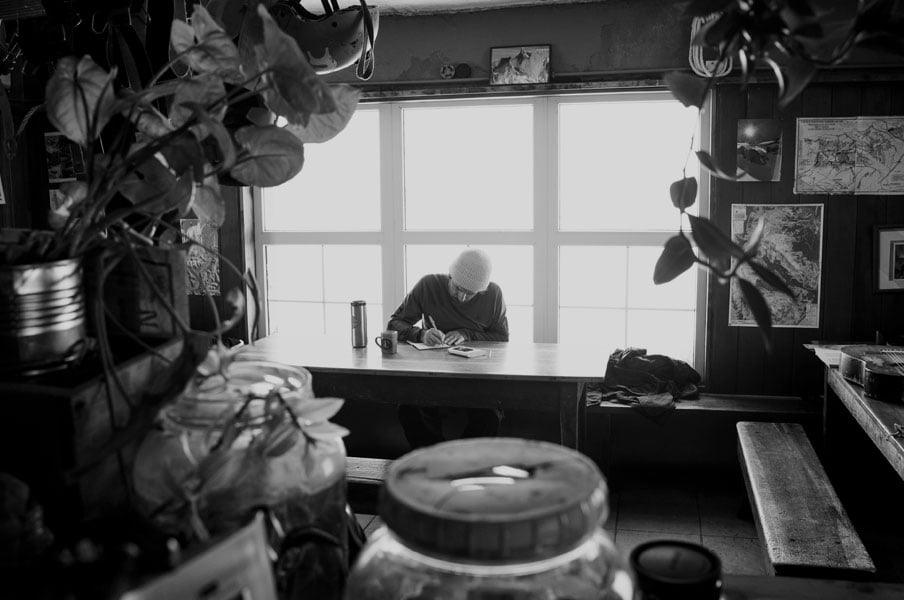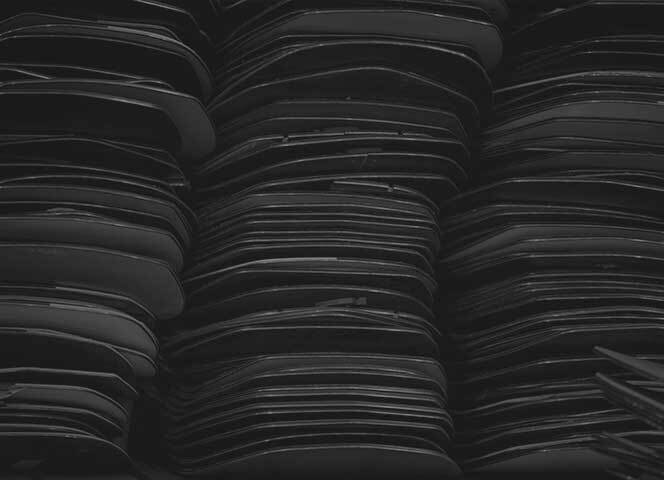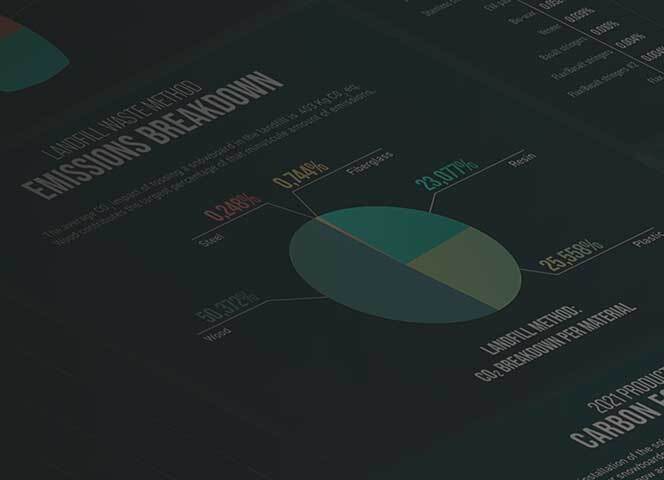How green is your board?
footprint of a Jones board.
Shipping and distribution

What defines snowboarding? It's the movement.
The unique body movements and the soul stirring sensations that those movements inspire are what keeps us strapping into a snowboard to dance with gravity down the mountain.
Because there are a lot of ways to get from point A to point B on snow. Skis, a splitboard, or just your own two feet can get you where you want to go, but a snowboard lets you trace a route unlike any other form of mountain transport. What defines snowboarding, and what makes us love it so much, is this totally one-of-a-kind feeling of sliding sideways across the frozen earth.
In 2020 we completed a Life Cycle Assessment (LCA) that calculated the approximate carbon footprint of every snowboard and splitboard model we sell. This in-depth sustainability analysis covered the complete life cycle of a Jones board, including every stage of its production and distribution. After exploring how materials affect a snowboard’s carbon footprint, the next step in the LCA analysis was to examine the environmental impact of shipping materials and finished products. What we found was an exact parallel to the concept of why we snowboard.
Shipping raw materials to the factory, and then shipping finished boards to our distributors, dealers and customers are unavoidable aspects of our production. And just like snowboarding, it is the style of how we move these products that means everything in terms of sustainability.
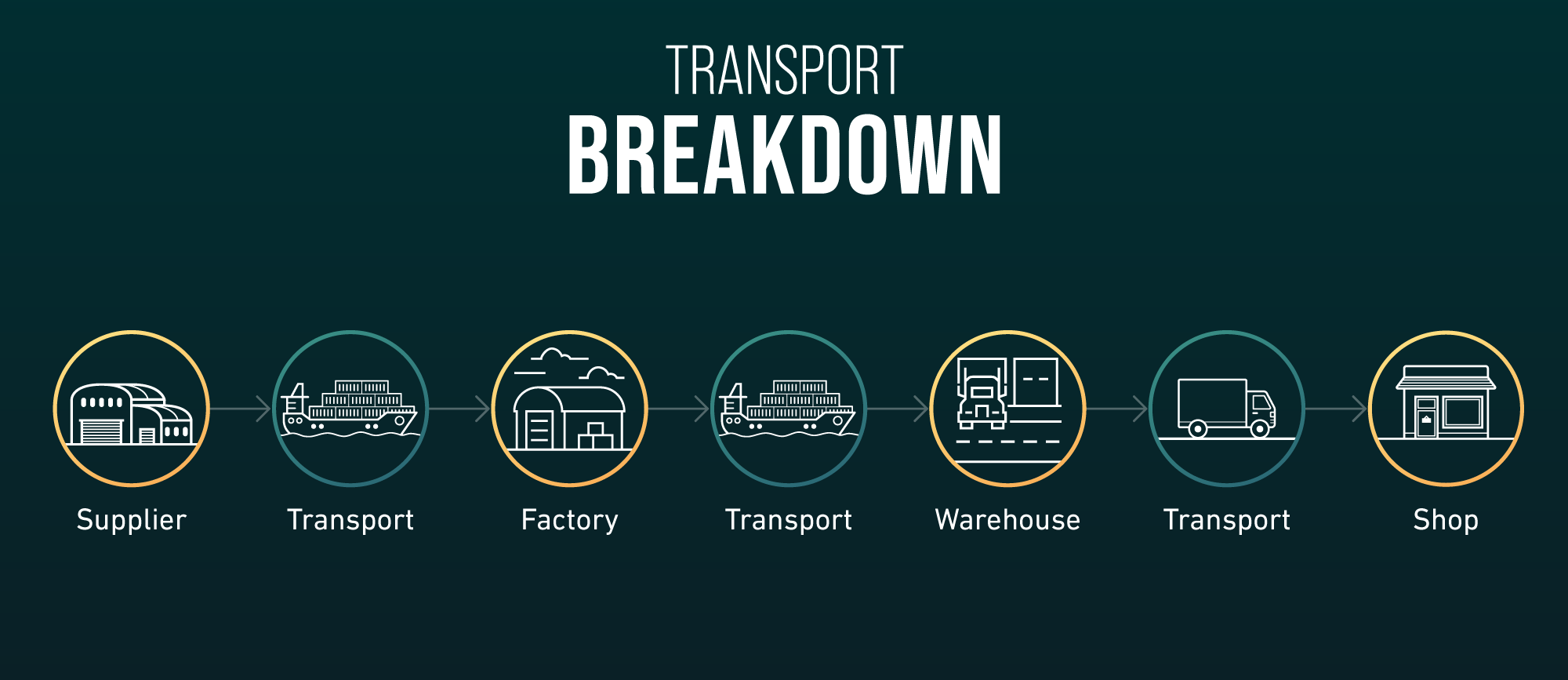
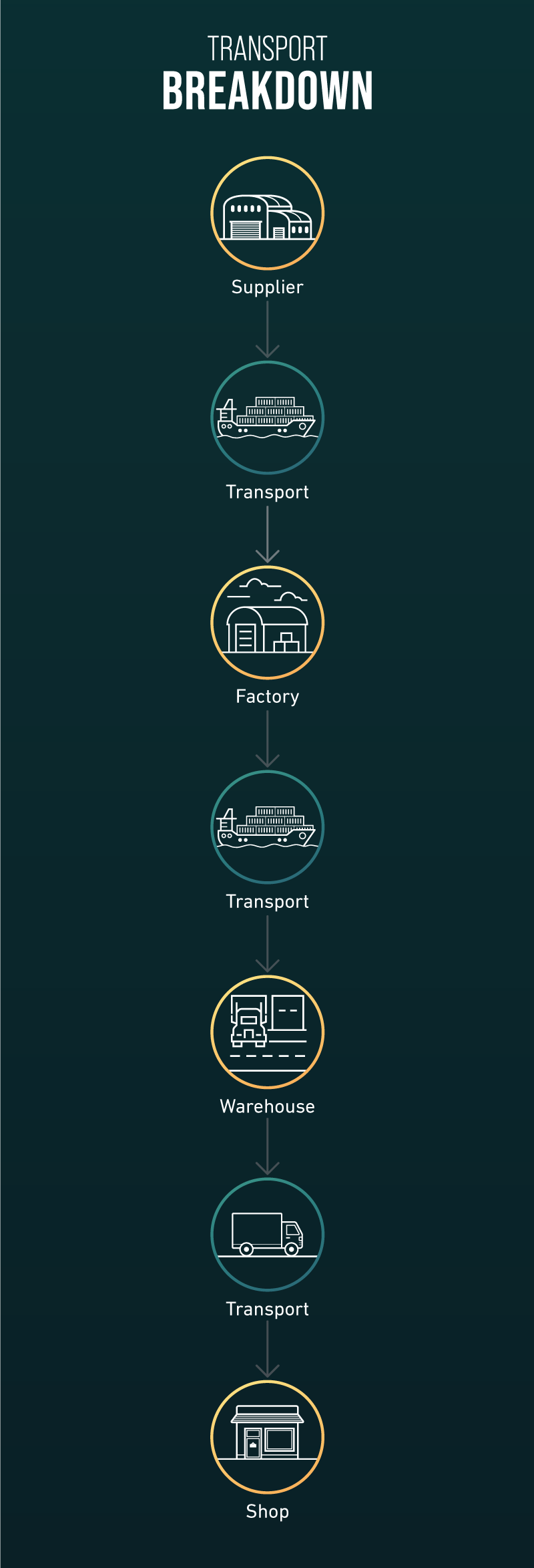
To calculate how material and product transportation affected our carbon footprint we broke it down into three sections - supplier to factory, factory to warehouse, and warehouse to customer.
Here’s what we learned about the sustainability of each of those three sections of building and distributing a snowboard.
Collecting the parts
We manufacture our snowboards in Dubai, UAE. You might think Dubai would be an out-of-the-way place to make snowboards, but the geographically reality is that Dubai is perfectly positioned in between the two regions that supply a vast majority of our raw materials - Europe and Asia.
Most of the materials we use in our board, including bases, edges, and sidewalls, come from long standing European suppliers. Wood veneer topsheets, inserts, and some of the wood we use for wood cores comes from Asia. You can learn all about our suppliers and their location on our supply chain map:
We start ordering the materials we need to make the boards you see in stores every fall over a year ahead of time. This advanced production timeline gives us wiggle room to cover for any material shortages, and it also allows us ample time to ship raw materials to Dubai using the most sustainable form of shipping transport possible - ocean freight.
Shipping via ocean freight emits nearly one hundred times less CO2 than shipping by plane.
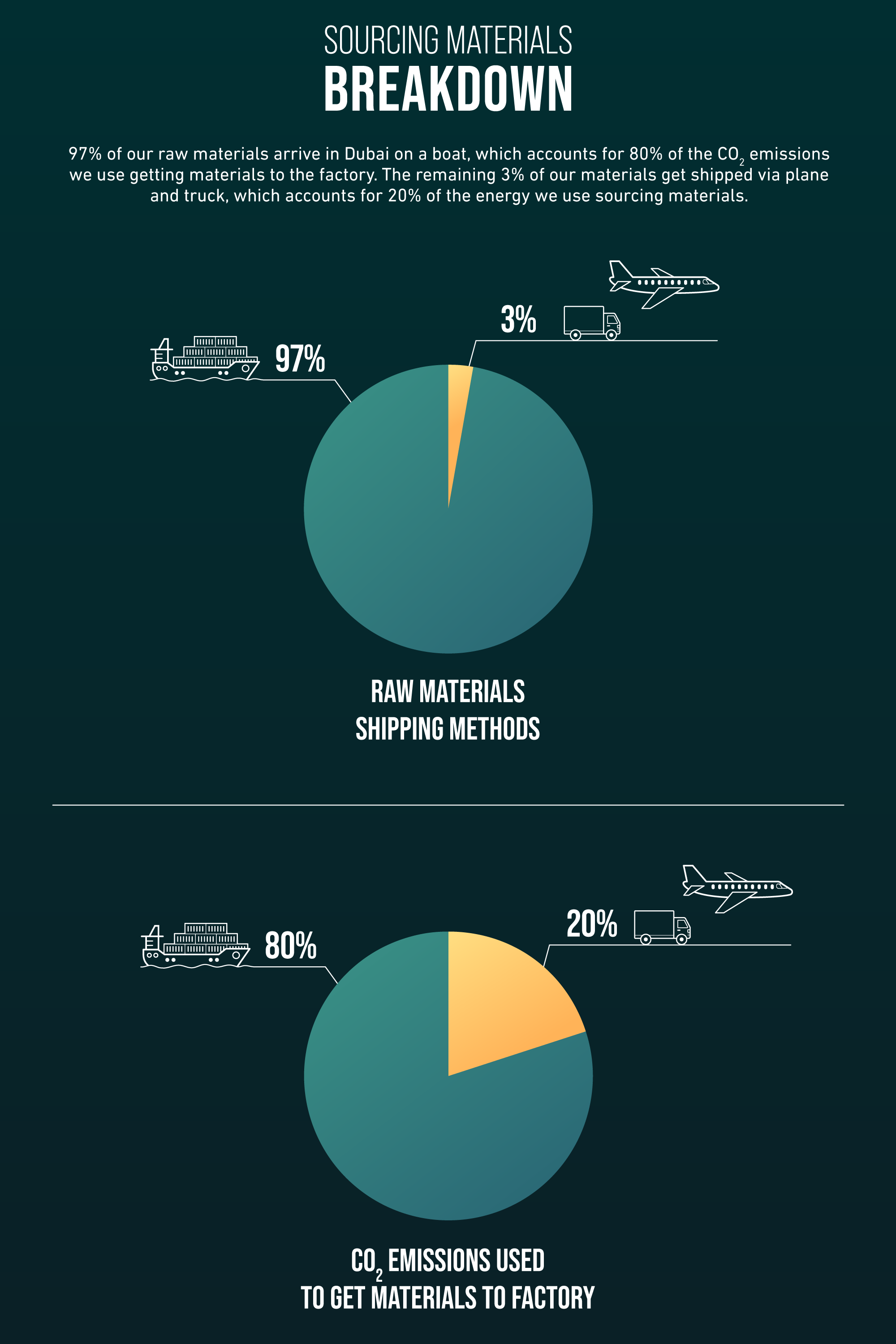
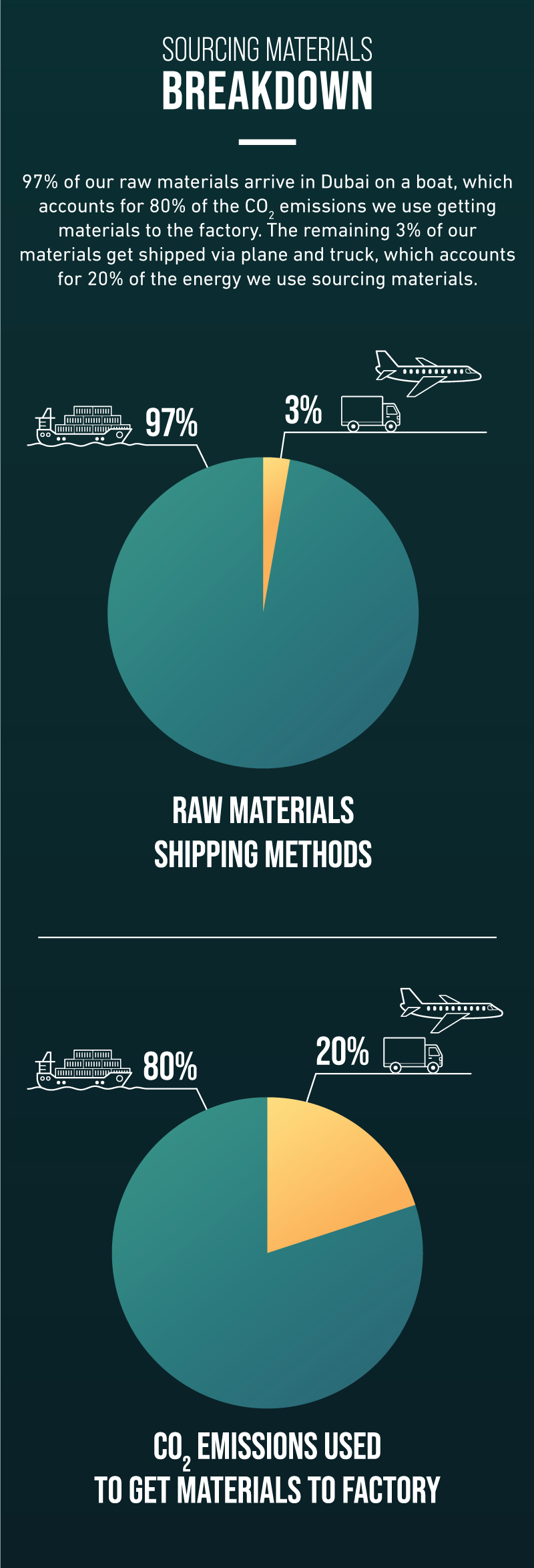
These findings were no surprise and they reinforce why we have always strived to use ocean freight for every stage of our production. The sustainability difference between ocean and air freight is even more glaring moving boards from the factory to the warehouse.
Distributing far and wide
We ship snowboards and splitboards from our factory in Dubai to about 35 countries around the world. Of these shipments, 88% are via ocean freight, 10% via air freight, and 2% via truck transport.
Because air freight is so incredibly energy intensive, the 10% of shipments that get shipped on a plane account for 90% of the CO2 we create to stock our distributors and warehouses. The 88% of ocean shipments account for only 8%, and those 2% of truck shipments account for 2% of the CO2 emissions chalked up by this first stage of our distribution.
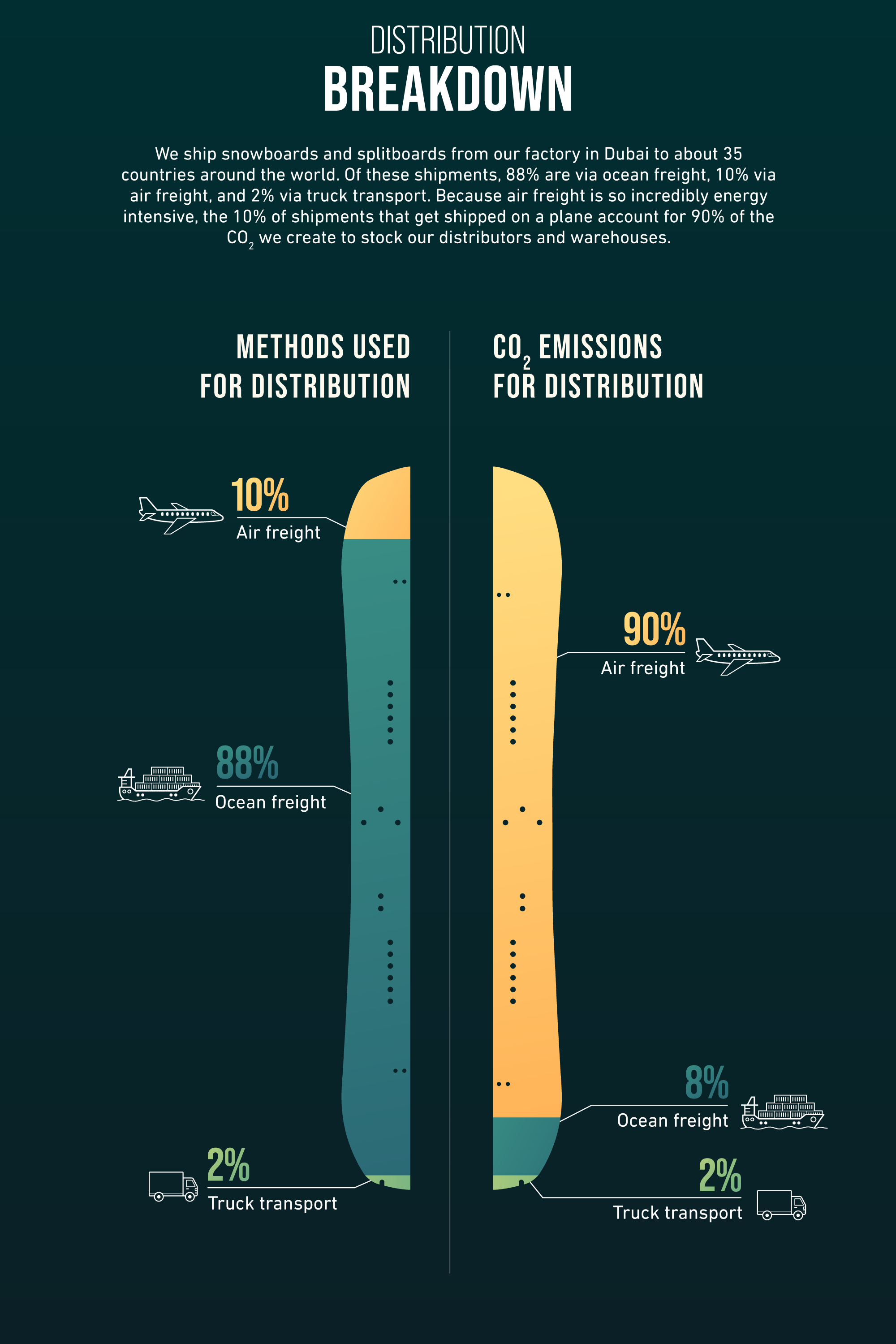
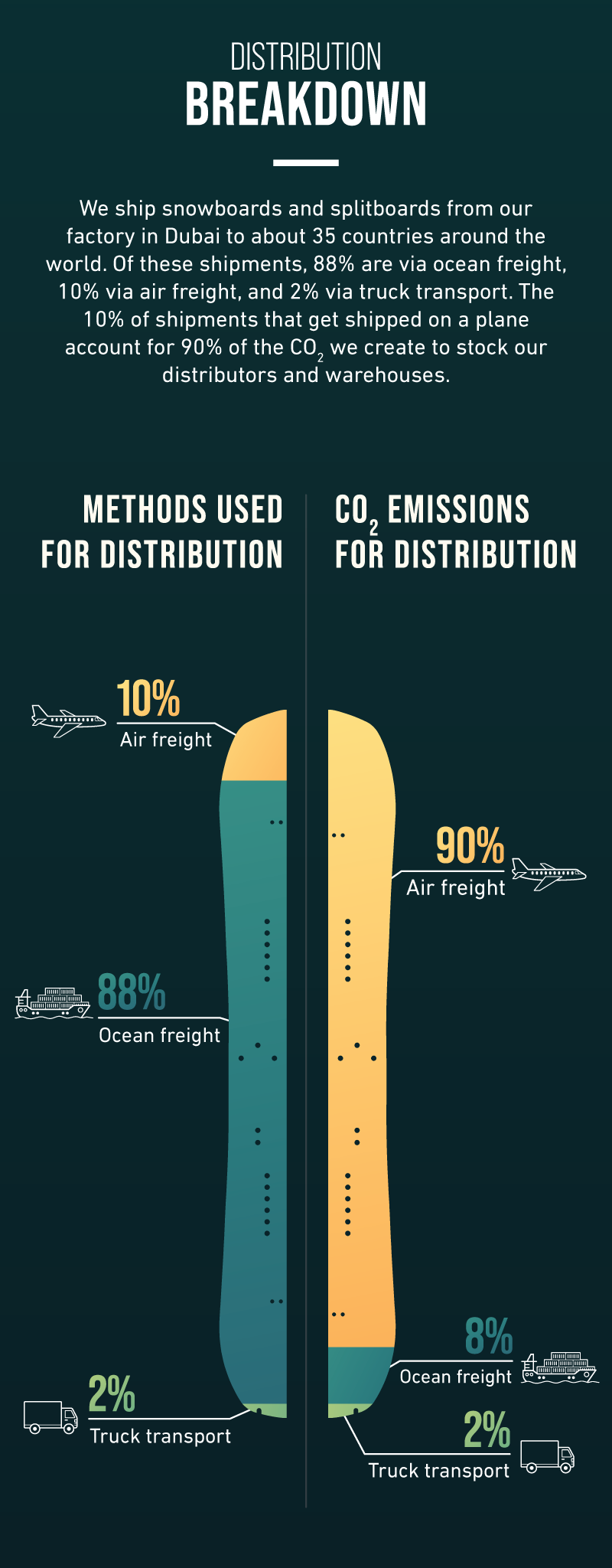
Recognizing both the additional environmental and financial cost of air freight, we are always pushing to eliminate unnecessary air shipments. We only ship via air when our production timeline demands we get prototypes or samples sent to our offices from the factory much faster than ocean freight would allow.
Starting in 2017, we also cut down on some of the CO2 emissions of this distribution stage by direct shipping via ocean freight from the factory to REI, our biggest worldwide retailer. This program has already saved massive amounts of energy. In one year, we reduced our supply chain emissions with REI by 66% with a total reduction of 1.5 tons of CO2.
Riding this success we are excited to begin direct shipping to several other key retailers in coming seasons.
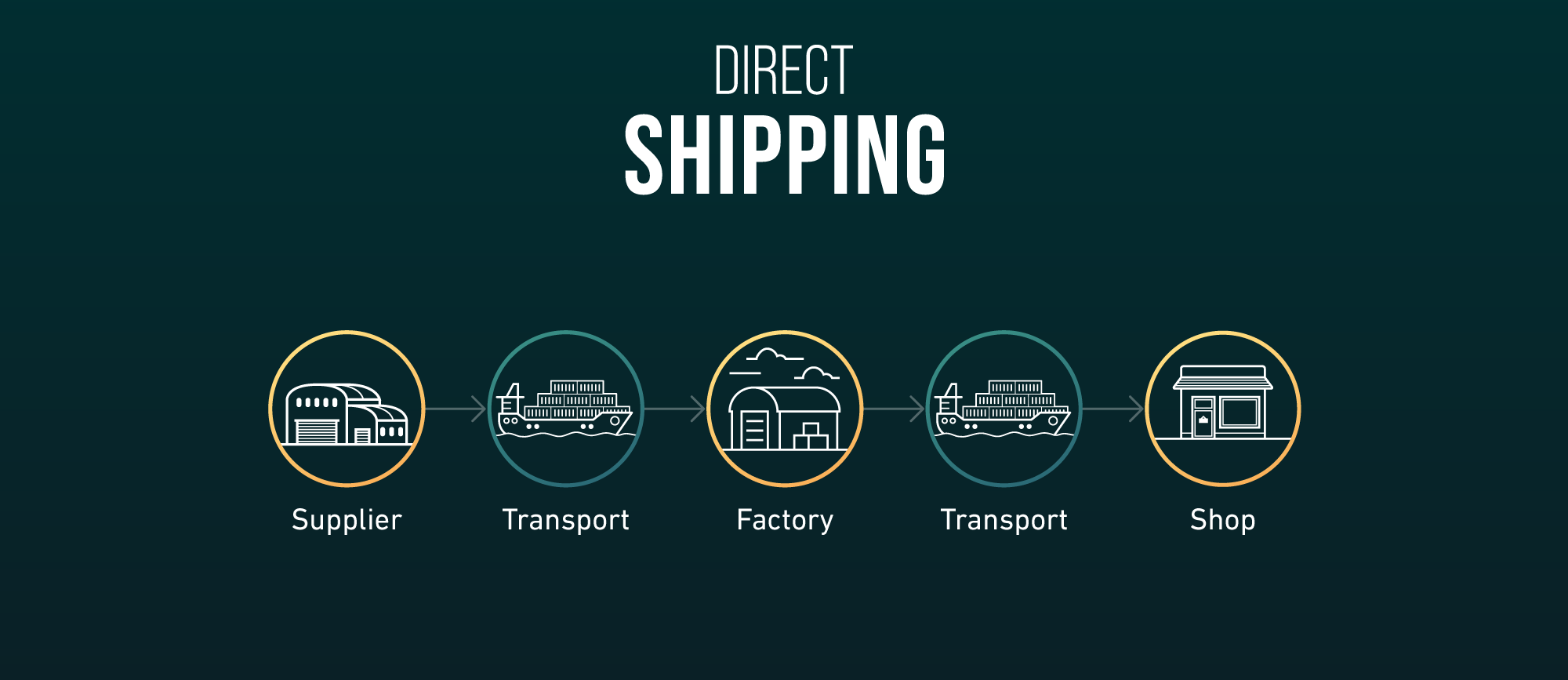
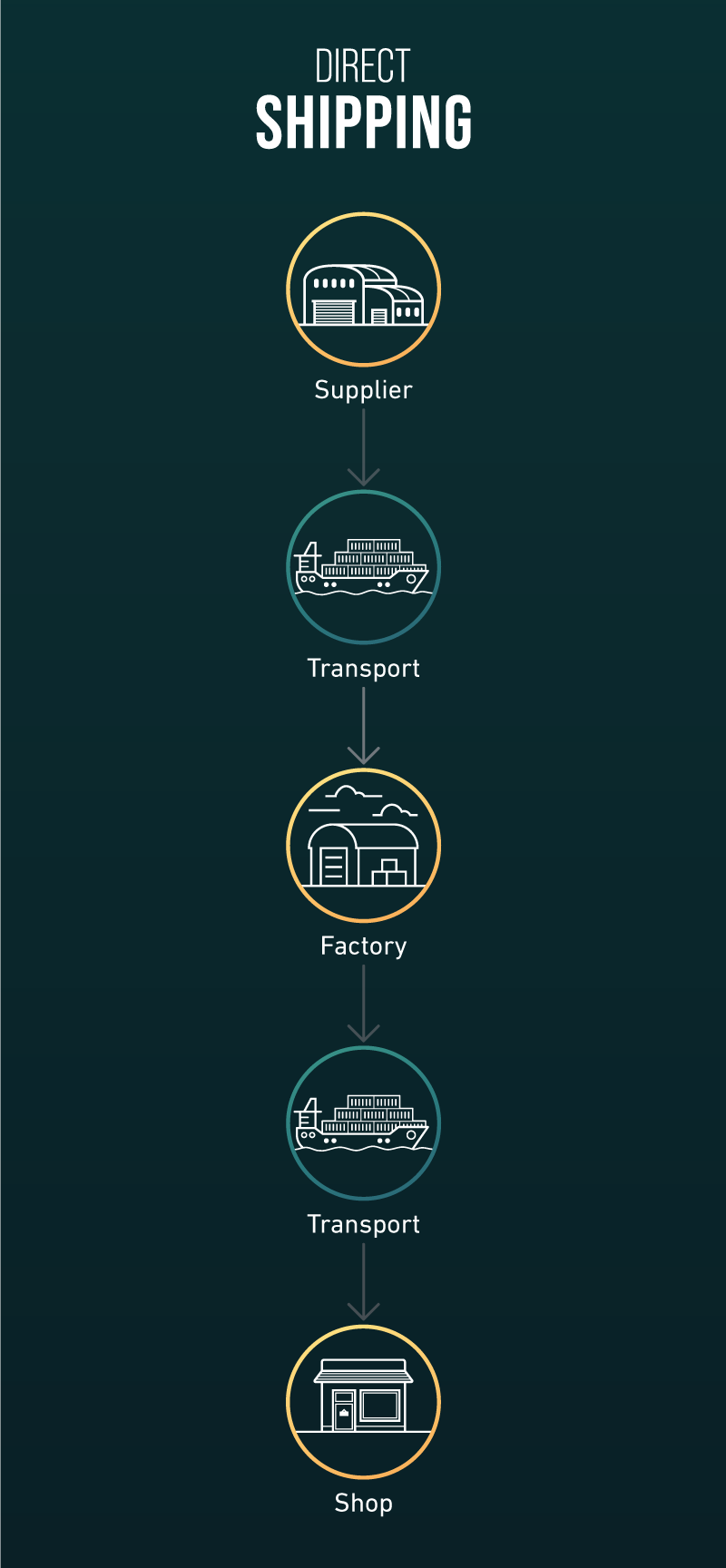
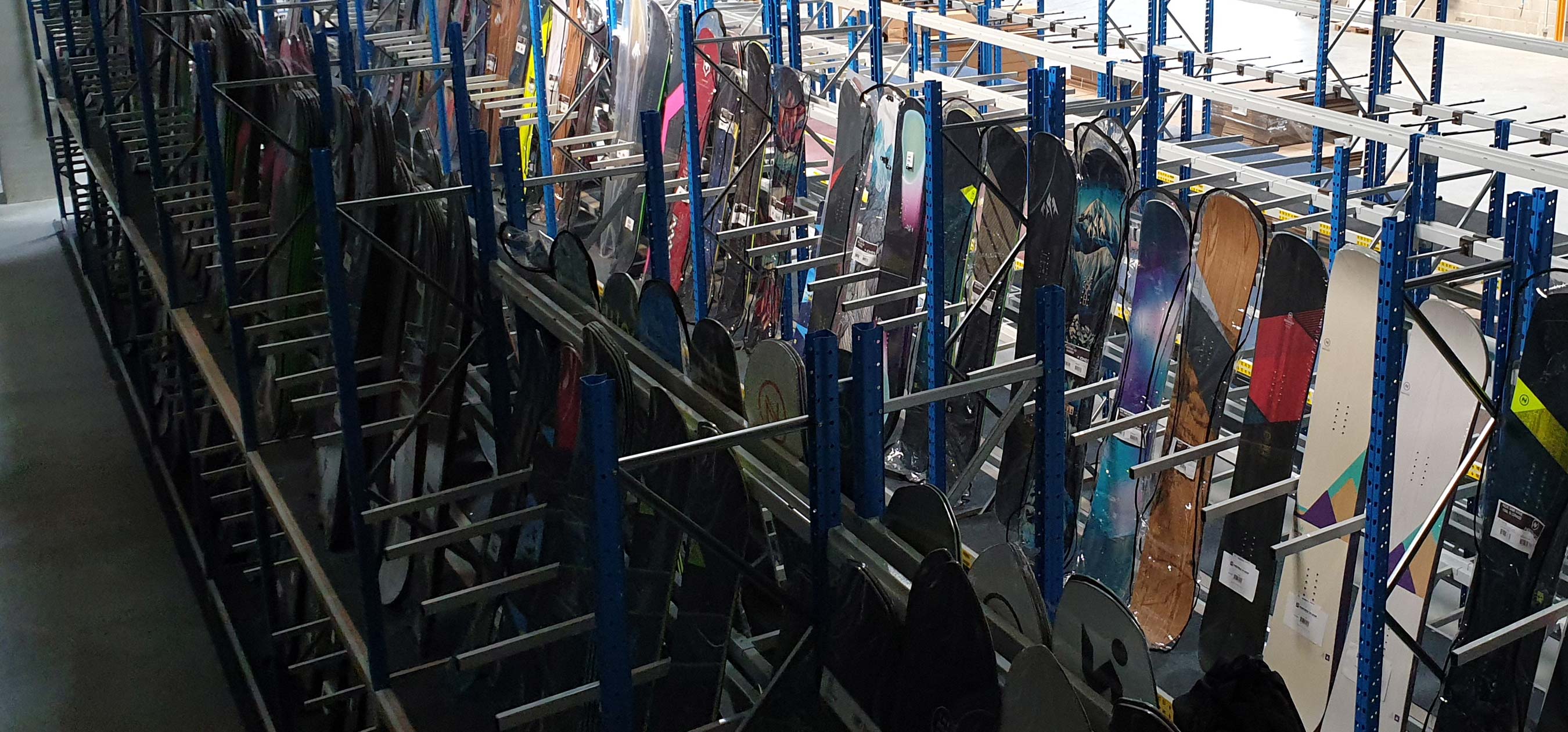
Delivering to your doorstep
When the ocean freight liner arrives at the port, our containers of snowboards are off loaded onto a truck and driven to the warehouse. Our two biggest warehouses are in Alsace, France and Nevada, USA so the drive is just a few hours from the port.
Moving on from the warehouse, we ship a vast majority of dealer orders and direct-to-consumer orders via truck, otherwise known as ‘ground shipping’. 82% of orders that leave our warehouse go by ground, with the remaining 18% shipping via air.
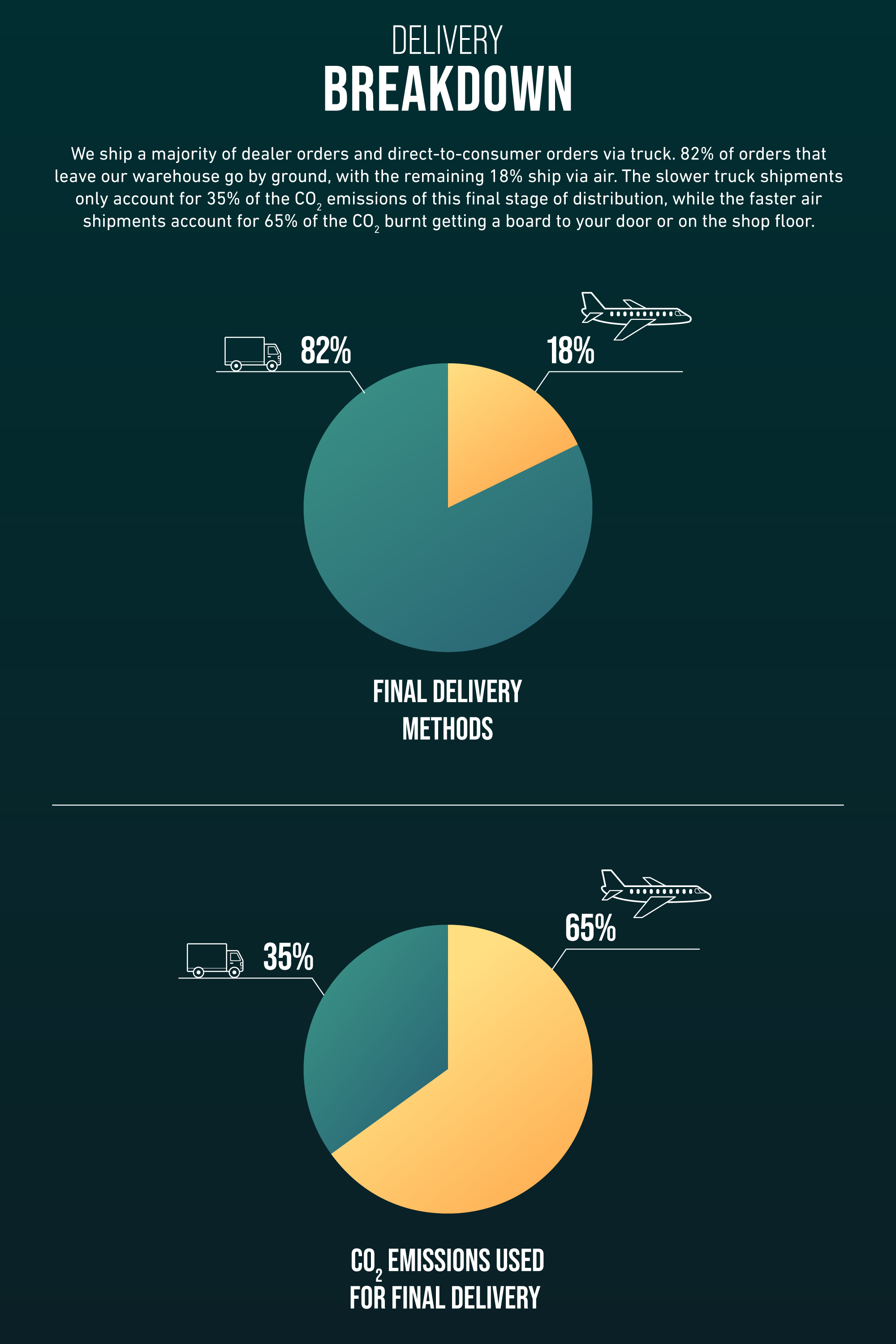
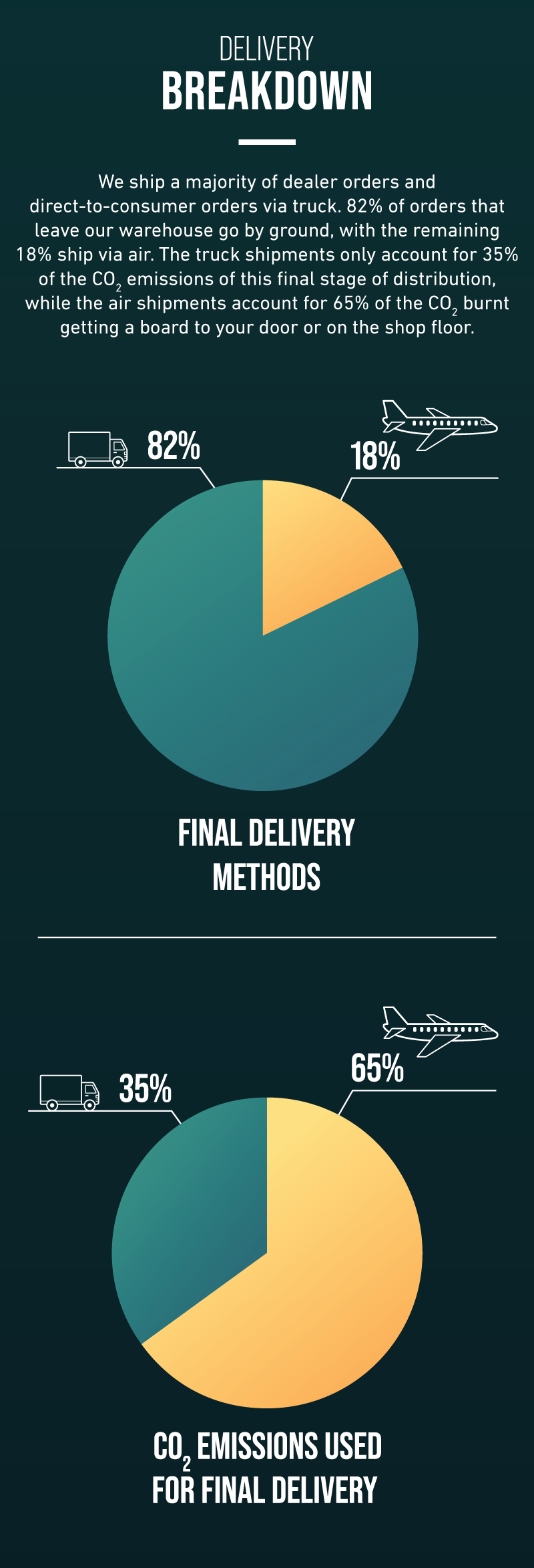
And once again, patience pays off in terms of emissions. The slower truck shipments only account for 35% of the CO2 emissions of this final stage of distribution, while the faster air shipments account for 65% of the CO2 created getting a board to your door or on the shop floor.
For our North American ecommerce customers, who buy products directly from our website, we always recommend ground shipping for this reason. When a customer requests two-day or next-day air shipping it dramatically increases the environmental impact of the sale. Please remember that the next time you order anything online. Unless you must have the product immediately, choose ground shipping.
The overall breakdown
In our analysis of shipping and transportation CO2 emissions we also calculated how much of our carbon footprint came from sourcing materials vs. shipping boards to warehouses and customers.
As expected, a vast majority of our transportation footprint is from shipping finished boards around the world. Our total annual CO2 emissions distributing boards to warehouses, distributors, dealers and customers is approximately 190 tons, which accounts for 85% of the CO2 we burn moving products from point A to point B. Shipping raw materials to the factory accounts for only 15%.
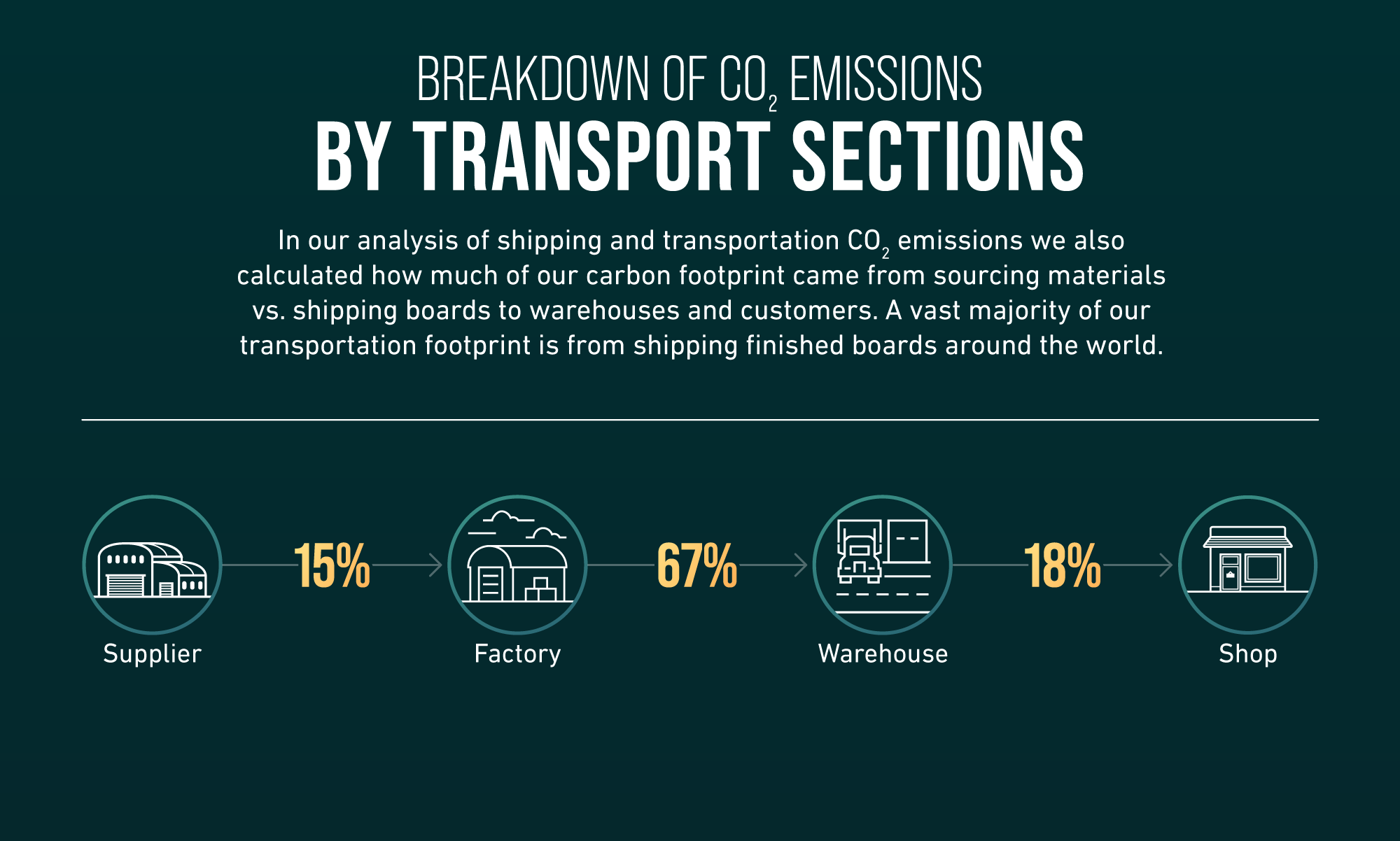
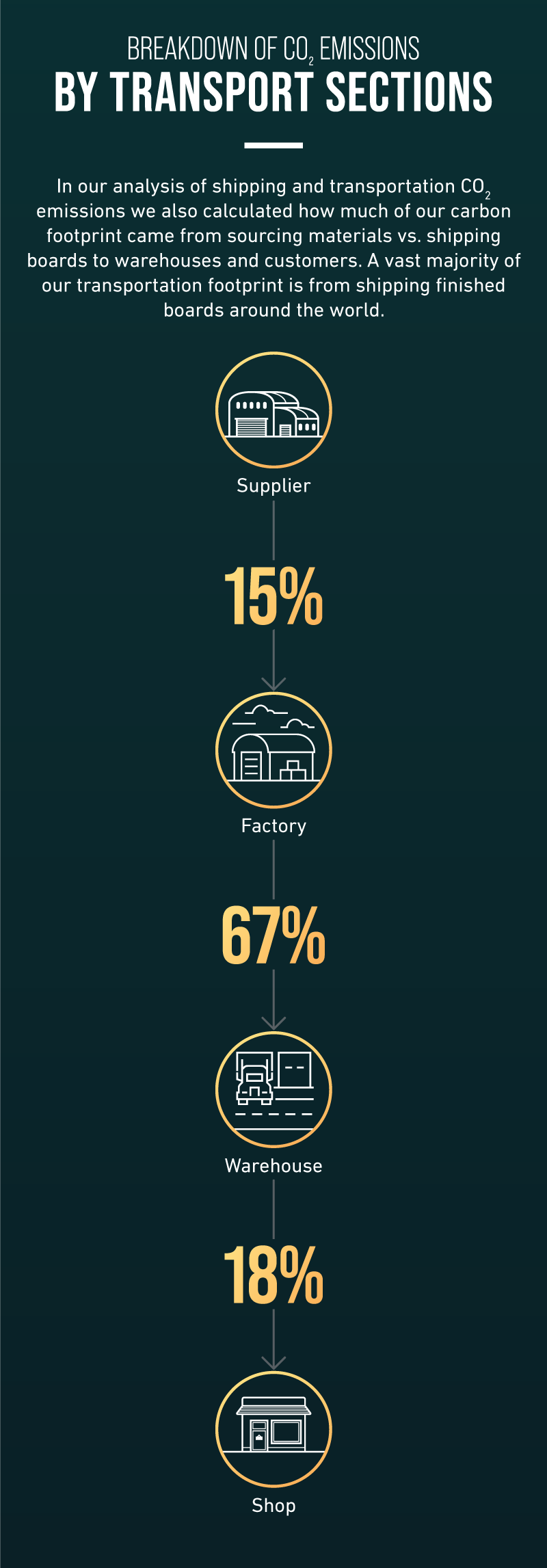
Analyzing the total shipping footprint of both materials and boards together, we learned that 91% of our shipments go via ocean freight, 4% go by truck, 4% go by air and the remaining 1% ship via inland vessel.
We’re very thankful that a vast majority of our shipments go by the most sustainable means possible as that 4% of shipments that transport via air freight have a very heavy footprint. 75% of the total CO2 emissions of our distribution and material sourcing are from air freight. Ocean freight is responsible for 17%, and truck transport claims the other 8%
Ocean freight may be the slowest shipping method, but as we know from snowboarding, the straightest, fastest line is not always the best line! Learning how taxing air shipments are on the environment has only strengthened our resolve to keep reducing our carbon footprint through better packaging, more direct shipments to retailers, and above all, using way less air freight. It won't be easy to eliminate air shipments from our production cycle, but we're happy to ride the slow boat for the good of the planet.
Next up, learn how materials and assembly affect the sustainability of a given board model in part three of the ‘How Green Is Your Board?’ series.
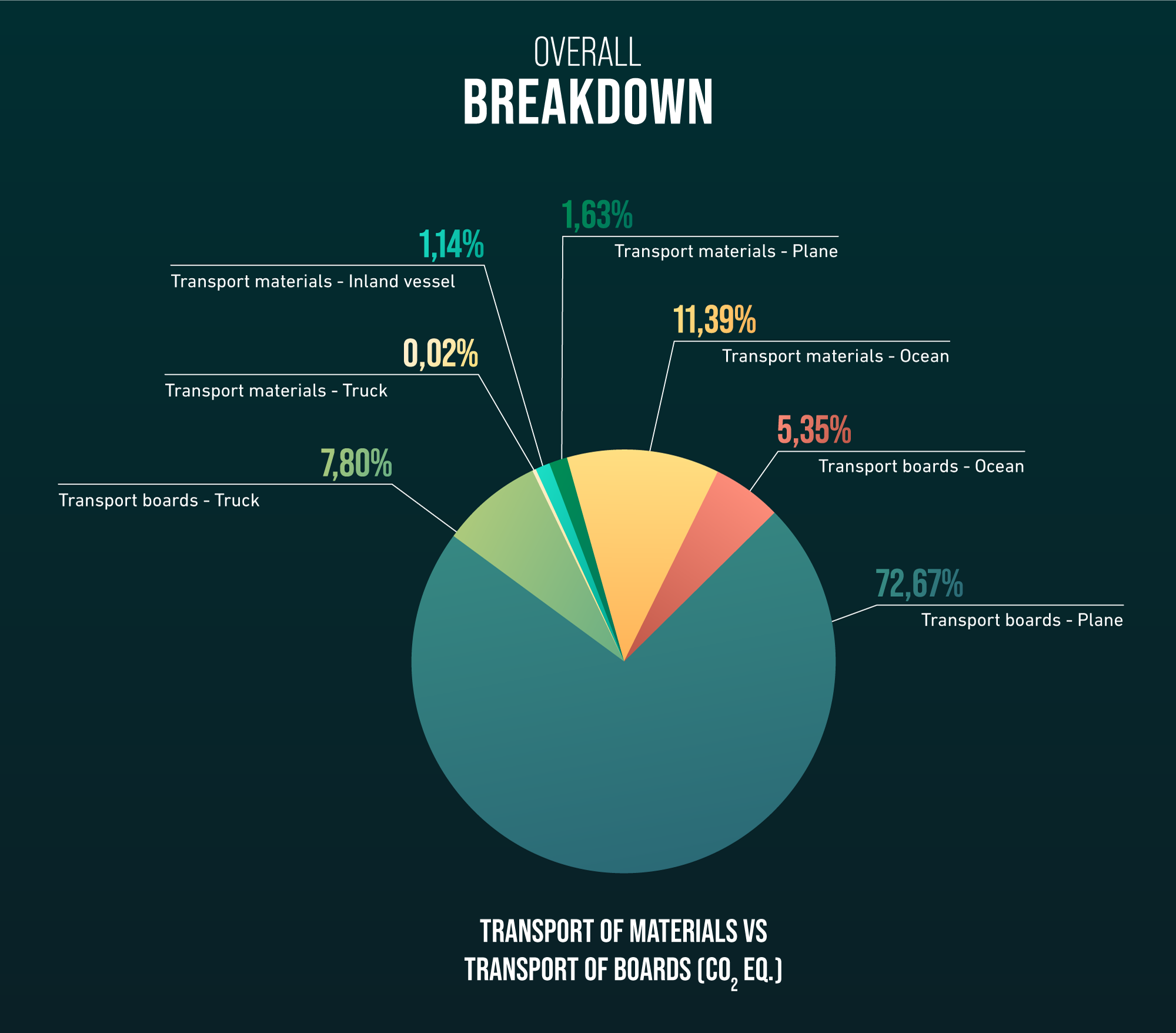

Source Information:
This story uses data generated by Ecochain, our partner from the Netherlands who helped us analyze the life cycle and calculate the carbon footprint of a Jones snowboard. Ecochain uses the ecoinvent database and the ReCiPe calculation method for their analysis. If you have any questions about the results presented in this story, feel free to contact us at [email protected]

